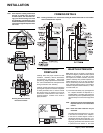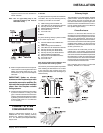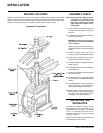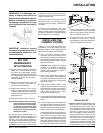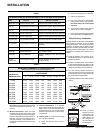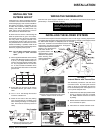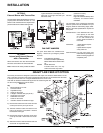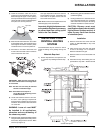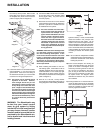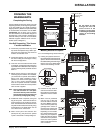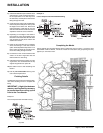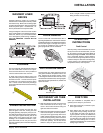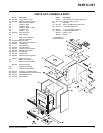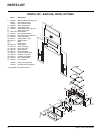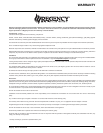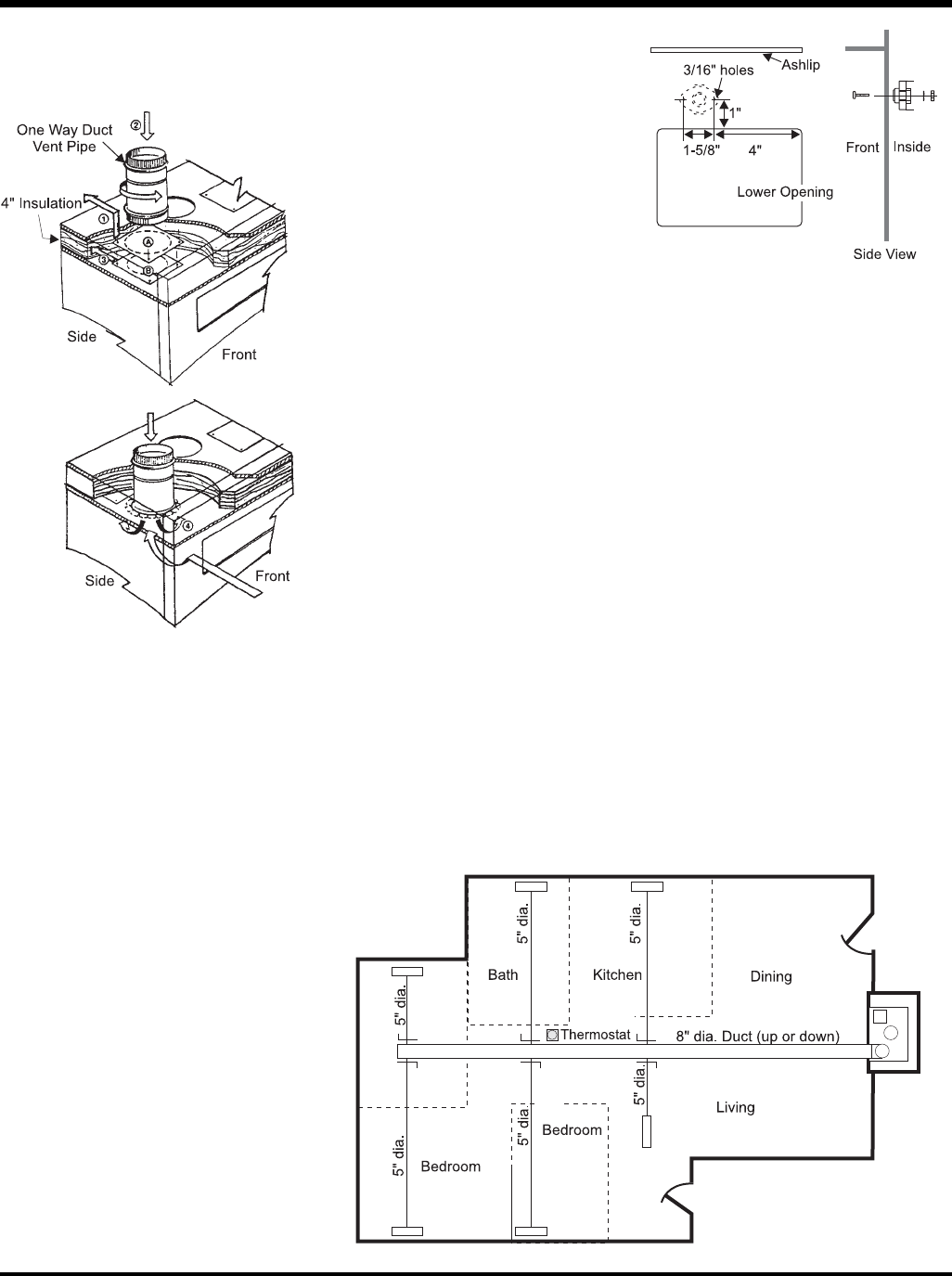
Regency Z2510 WarmHearth16
Typical Floor Register
INSTALLATION
be at the top so they lie fl at. Bend out the
lower edge of the valve at 4 places inside
the fi replace with pliers so that it can't be
pulled out again (refer to Diagram 2).
6) Connect the inlet of the blower to the outlet
of the valve using 8 inch diameter metal
ducting (rigid or fl ex). Any other size will
not work properly.
7) Duct-work can then be run to the desired
rooms following good warm air distribution
practices. Up to six 5 in. diameter runs can
be installed from this system.
Note: The cross sectional area of the distri-
bution system must total at least 50
square inches. For example: If 5 in.
pipe is used for distribution, the cross
section of each is 20 square inches.
Three runs of 5 in. pipe is minimum.
Shut-offs must not be installed on the
registers feeding the room with the
thermostat. To prevent the duct and
motor from overheating 50 square
inches of grill/duct must remain open
during operation.
WARNING: When the central heating blower
is in operation it actually removes air from
the room containing the fi replace. If this
room can be closed off from the rest of the
house, (i.e. with a door) a grille with at least
100 square inch open area must be installed
to allow the air to get back to the fi replace.
Otherwise periodic smoking of the fi replace
will be experienced.
8) When installing the blowers for the cen-
tral heating option, a thermodisc must be
installed (supplied with one-way damper).
Install thermodisc on the inside (top right
side) against the back surface using the
two screws, lock washers and nuts supplied
(refer to diagram 3).
9) Wire fan to a 120 volt, 15 amp breaker
through the line voltage thermostat (refer to
wiring diagrams in the Installing the Blower
5) Locate the blower in a convenient location
near the fi replace. In a 2 story home one
good location would be in the ceiling of
the basement because you must be able
to access it for oiling and replacement.
Note: The blower can be installed almost
anywhere in the home. However,
some thought should be put into
the planning, to ensure blower noise
is kept away from rooms that want
quiet. Length of runs should be kept
to a minimum to conserve space and
minimize cost. Maximum duct length
should normally not be more than 50
feet between the fi replace through the
fan to the outlet farthest away. There
is a loss of about 15% performance
at 50 feet.
WARNING: The WarmHearth may
be tied into your home's central
warm air duct system by linking
into the HOT air duct in any position
you may choose, however, caution
must be used to ensure that hot air
produced by the WarmHearth can-
not be drawn back into the central
heating furnace.
Diagram 1
Diagram 2
Systems section). If used, the thermostat
should be located in the principal room
heated through the duct system. Do not
install it in the room the fi replace is built in.
Near the fi replace a simple shut-off switch
must be installed in series with the thermo-
stat. If the internal blower (Part # 000-912)
is also installed, the shut-off switch will be
mounted just beside the variable speed
control.
Note: Do not install an independent variable
speed control on the central heating fan,
unless the manufacturer of the central
heating fan permits it.
10) Frame around fi replace and ducting as
shown. Use metal ducting only; don't use
plastic in the chase. The diagram shows
some ways of ducting the hot air from the
fan. You are not restricted in the size of
pipe, as long as the total cross sectional
area of all runs combined is not less than
50 square inches. The diagram shows
alternate fan locations. Only one external
fan is allowed.
11) Ducting is tested at 1 in. clearance to fram-
ing for the fi rst 6 feet and 1/2 in. thereafter
and no stand-offs are required. All ducting
should be insulated to reduce heat loss.
Use only approved insulation.
Diagram 3



